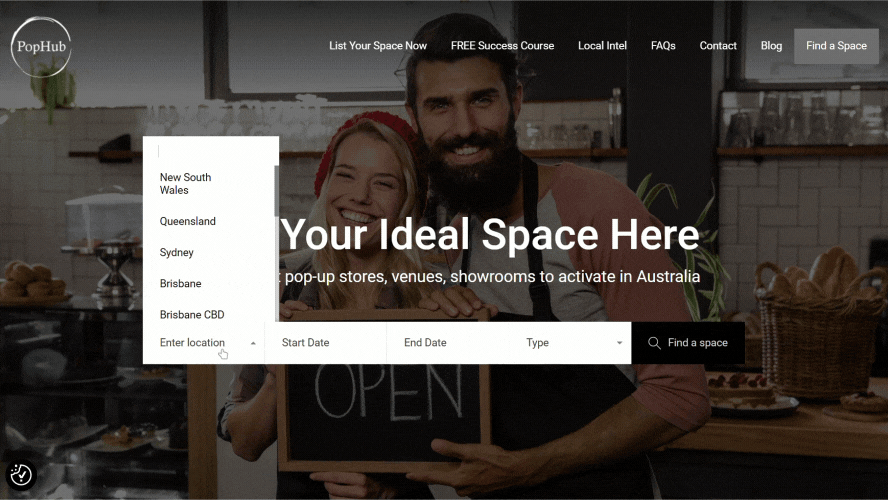
How Pop-Up Shops Drive Business Growth: Benefits, Challenges, and Smart Strategies
Pop-ups are changing the way brands do retail — and the results speak for themselves.
In today’s competitive landscape, temporary retail isn’t just a trend, it’s a strategy. Pop-up shops are helping brands test new markets, build buzz, engage directly with customers, and turn short-term activations into long-term success.
As customer expectations shift toward immersive and personalised experiences, pop-up shops are proving to be one of the most agile and cost-effective ways to meet that demand.
So what’s really behind the rise of the pop-up model and how can your business make the most of it?
What is a Pop-Up Shop and Why Is It So Effective?
A pop-up shop is a short-term retail activation, set up for a limited time in a high-visibility location. Whether it lasts a few days or a few months, the idea is the same: create urgency, generate excitement, and offer a brand experience that feels fresh, exclusive, and temporary.
What sets pop-ups apart from traditional retail?
They’re flexible – Short leases, small footprints, and quick turnaround.
They’re immersive – With full control over layout, tone, and visuals.
They’re powerful marketing tools – Bringing your brand to life in real-time.
They’re great for data – Offering real-world insight into customer preferences, pricing, and products.
Key Benefits of Pop-Up Shops for Business
Whether you’re a startup testing your first physical presence or a national brand launching a new campaign, the pop-up model offers unique advantages:
1. Low Commitment, High Reward
No long-term lease. No permanent fit-out. Just an opportunity to show up where your audience is, make a statement, and measure what works — fast.
2. Flexibility in Location and Timing
Want to test a product in summer only? Trial a new city? Align with an event or cultural moment? Pop-ups let you adapt quickly and show up with purpose.
3. Buzz and Urgency
The “here today, gone tomorrow” mindset taps into FOMO. When customers know the experience is temporary, they’re more likely to visit — and buy.
4. Stronger Customer Connections
Pop-ups are perfect for face-to-face feedback, live demonstrations, product sampling, and creating emotional brand moments.
5. Cross-Channel Integration
Modern pop-ups blend offline experience with online ease: QR codes, mobile ordering, influencer takeovers, even AR/VR experiences — all wrapped into one activation.
Challenges and Considerations
Pop-ups are exciting, but they’re not effortless. Key challenges to plan for:
Time Pressure: Pop-ups require fast turnaround and tight coordination.
Logistics: Permits, bump-in/out, signage, staffing, and equipment all need planning.
Customer Experience: With limited time to impress, every detail matters — from signage to service.
Tech Integration: Seamless payment, inventory tracking, and digital follow-ups are key to conversion.
Tips for Launching a Successful Pop-Up Shop
Thinking of launching your own pop-up? Start here:
1. Define Your Goal
Is it about sales, awareness, testing, or launching something new? Your goal shapes everything — from design to location choice.
2. Choose the Right Space
Look for high-traffic, brand-aligned spaces. Consider partnering with space activation platforms like PopHub to access curated listings.
3. Create a Concept Worth Visiting
Go beyond product — think experience. Whether it’s an immersive installation, limited-edition drop, or influencer event, your pop-up should feel like a moment.
4. Use Social Media to Build Anticipation
Start teasing early. Share behind-the-scenes content, countdowns, sneak peeks. Use influencer collaborations and geo-targeted ads to drive foot traffic.
5. Make It Easy to Buy
Offer multiple payment methods. Use QR codes for additional info or online purchases. Don’t make customers wait — or wonder.
6. Keep the Momentum Going
After closing day, your job isn’t done. Follow up online, share highlights, and collect feedback. Pop-ups are about long-term impact, not just short-term sales.
The Future of Retail Is Flexible
Pop-up retail is not replacing traditional stores — it’s redefining what retail can look like. As brands continue to embrace this agile format, the real winners will be those who see pop-ups not just as events, but as experiments — opportunities to listen, adapt, and grow.
Whether you’re launching a new label, building community, or exploring a new market, the pop-up model makes it possible.
And if you’re looking for the right space to start — PopHub can help.

